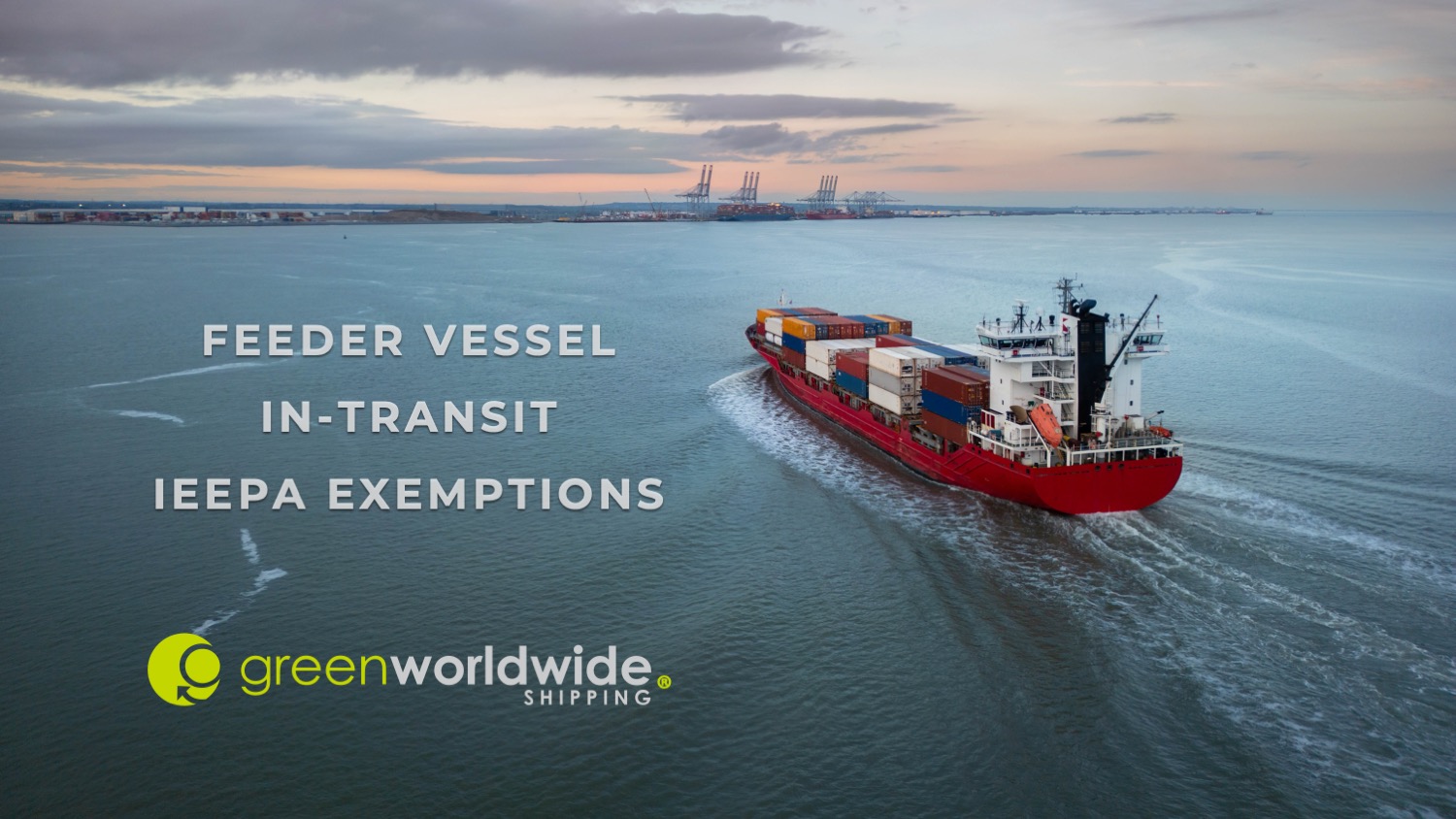U.S. Customs and Border Protection (CBP) recently issued clarification for which shipments moving via feeder vessels fit within the in-transit exemption for reciprocal tariffs. In a May 15, 2025 update to its IEEPA Reciprocal Tariffs FAQ, CBP outlined specific conditions under which cargo qualifies for the exemption, depending on vessel routing and transfer activity.
IN-TRANSIT FEEDER VESSEL EXEMPTION FOR RECIPROCAL TARIFFS
CBP provided two scenarios to demonstrate in-transit feeder vessel exemption status under IEEPA Reciprocal Tariffs:
Exemption Eligible: Cargo is loaded before the cutoff date onto a vessel bound for the United States. The vessel may stop at foreign ports to offload other cargo, load additional containers, or refuel, but the U.S.-bound cargo remains onboard. Because the goods were never unladen or transferred, and the vessel was U.S.-destined from the origin port, the exemption applies.
Ineligible for Exemption: Cargo is loaded before the cutoff date onto a vessel headed to a foreign port, where it is transferred (after the cutoff date) to a second vessel bound for the United States. Since the final leg of the journey begins after the cutoff, and the goods switch vessels, the in-transit exemption does not apply.
CBP emphasized that the key factor for exemption eligibility is continuity. Cargo must stay on a U.S.-bound vessel loaded before the deadline without being unladen or transferred to qualify.
Importers should review documentation carefully to ensure entries meet all conditions for the in-transit exemption and to avoid potential compliance issues.
Stay up-to-date on freight news with Green’s Weekly Freight Market Update by following us on LinkedIn. For continuous updates, make sure to check out our website at greenworldwide.com.







